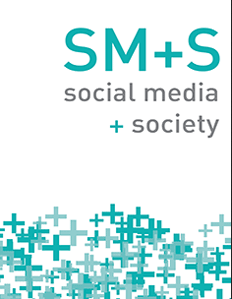相似按钮的隐藏历史:从去中心化数据到语义封闭
IF 5.5
1区 文学
Q1 COMMUNICATION
引用次数: 0
摘要
人工智能依赖于使用语义技术来表示人类的共享世界。Facebook“点赞”按钮使用的语义网标准就是一个例子。在“点赞”按钮的情况下,一个去中心化和开放的语义网被用来为整个网络的广告积累个人数据。“点赞按钮”出现后不久,谷歌创建了谷歌知识图谱,这是一个私人企业版的语义网。事实上,硅谷的每一家大公司都很快创建了自己的知识图谱。语义网从一个标准化开放知识的民主项目转变为一个控制项目,压缩语义,消除对象与知识图中表示的对象之间的差异。本文章由计算机程序翻译,如有差异,请以英文原文为准。
The Hidden History of the Like Button: From Decentralized Data to Semantic Enclosure
Artificial intelligence relies on the use of semantic technologies to represent the shared world of humanity. The story of how this came to be is exemplified by the use of Semantic Web standards by the Facebook “Like” button. In the case of the “Like” button, a decentralized and open Semantic Web was used to fuel the accumulation of personal data for advertising throughout the entire Web. The advent of the “Like button” was shortly followed by Google’s creation of the Google Knowledge Graph, a private corporate version of the Semantic Web. In fact, every major company in Silicon Valley soon created its own knowledge graph. The Semantic Web was transformed from a democratic project for standardized open knowledge to a project of control, collapsing semantics and erasing the difference between the object qua object and the object as represented in a knowledge graph.
求助全文
通过发布文献求助,成功后即可免费获取论文全文。
去求助
来源期刊

Social Media + Society
COMMUNICATION-
CiteScore
9.20
自引率
3.80%
发文量
111
审稿时长
12 weeks
期刊介绍:
Social Media + Society is an open access, peer-reviewed scholarly journal that focuses on the socio-cultural, political, psychological, historical, economic, legal and policy dimensions of social media in societies past, contemporary and future. We publish interdisciplinary work that draws from the social sciences, humanities and computational social sciences, reaches out to the arts and natural sciences, and we endorse mixed methods and methodologies. The journal is open to a diversity of theoretic paradigms and methodologies. The editorial vision of Social Media + Society draws inspiration from research on social media to outline a field of study poised to reflexively grow as social technologies evolve. We foster the open access of sharing of research on the social properties of media, as they manifest themselves through the uses people make of networked platforms past and present, digital and non. The journal presents a collaborative, open, and shared space, dedicated exclusively to the study of social media and their implications for societies. It facilitates state-of-the-art research on cutting-edge trends and allows scholars to focus and track trends specific to this field of study.
 求助内容:
求助内容: 应助结果提醒方式:
应助结果提醒方式:


